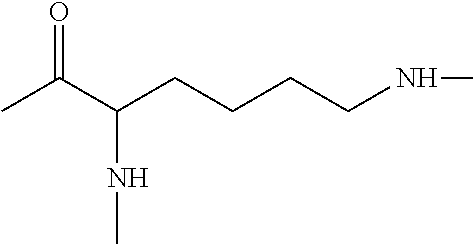Method of treatment or prophylaxis of infections of the eye
a technology of eye infection and eye prophylaxis, which is applied in the direction of antibacterial agents, peptide/protein ingredients, drug compositions, etc., can solve the problems of corneal ulceration, conjunctival infection, and children may infect other members of the family including siblings and parents, so as to prevent or reduce the severity reduce the spread of a microbial infection
- Summary
- Abstract
- Description
- Claims
- Application Information
AI Technical Summary
Benefits of technology
Problems solved by technology
Method used
Image
Examples
example 1
Anti-adenoviral Activity Prevention of Viral Penetration of Cells
[0167]The penetration of adenovirus into cells was assessed using a titer reduction assay (Hayashi, K: Characterization of antiviral activity of a sesquiterpene, triptofordin C-2, J. Antimicrob. Chemother., 1996, 37 (4), 759-68). Prevention of penetration of the virus into a cell measures the ability of the active agent to prevent cell penetration and consequently preclude infection.
[0168]Adenovirus subtype 5 (ATCC #VR-5) was used with HeLa cells (ATCC #CCL-2), Adenovirus subtype 8 (ATCC #VR-1640) was used with A549 cells (ATCC #CCL-185), Adenovirus subtype 19 (ATCC #VR-254) was used with Chang C cells (ATCC #CCL-20.2) and Adenovirus 37 (ATCC #VR-929) was used with WI-38 cells (ATCC #CCL-75). Both epithelial and fibroblast cell types were used.
[0169]Cells were incubated with different concentrations (10, 3, 0.5, 0.1, 0.02 0.004% w / v) of SPL7013 or no SPL7013, in serum free media for 60 minutes at 37° C. Following the i...
example 2
Anti-adenoviral Activity—Virucidal Activity
[0178]For a virucidal assay (Standard Test Method to Assess the Activity of Microbicides Against Viruses in Suspension, ASTM E 1052), SPL7013 was exposed to adenovirus subtypes at different concentrations (0.5%, 1.0%, 3.0% and 10.0% w / v) for different amounted of time (30 sec, 1 min, 5 min, 30 min, 1 hr). Only a few samples were tested at 30 sec. After exposure, SPL7013 was neutralized with foetal calf serum. This neutralized sample was then diluted 1 / 10 to 1 / 100,000. These dilutions were used to infect target cells (cells and virus details are as described for Example 1) in plates. After sufficient incubation (5-14 days at 37° C.±2° C.), plates were classified as positive or negative for cytopathic effect and based on the dilution of the virus applied to the different plates the tissue-culture infective dose (TCID50) was calculated (see Example 1 for the method). Comparing the TCID50 for samples without SPL7013 with the TCID50 values for s...
example 3
Anti-adenoviral Activity of Macromolecules
[0181]The anti-adenoviral activity of a selection of macromolecules was assessed by the following method.
[0182]For the Cytopathic assay (CPE) Plates of cells were incubated with the respective adenovirus subtype and drug at different drug concentrations. Cells were incubated until a Cytopathic effect was clearly observed in plates where cells and virus were plated without drug. In plates where drug was added, the cytopathic effect was quantified using a light microscope and expressed as 0% (no effect) up to 100% (effect as strong as in the no drug control plates). CPE readings were plotted against the drug concentration and the EC50 value was determined as the drug concentration where 50% CPE was observed.
[0183]The Plaque reduction neutralization test (NR) is used to quantify the ability of a dendrimer to neutralize / inactivate virus. The dendrimer solution to be tested is diluted and mixed with a viral suspension. This is incubated to allow ...
PUM
 Login to View More
Login to View More Abstract
Description
Claims
Application Information
 Login to View More
Login to View More - R&D
- Intellectual Property
- Life Sciences
- Materials
- Tech Scout
- Unparalleled Data Quality
- Higher Quality Content
- 60% Fewer Hallucinations
Browse by: Latest US Patents, China's latest patents, Technical Efficacy Thesaurus, Application Domain, Technology Topic, Popular Technical Reports.
© 2025 PatSnap. All rights reserved.Legal|Privacy policy|Modern Slavery Act Transparency Statement|Sitemap|About US| Contact US: help@patsnap.com



